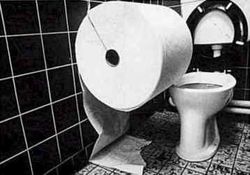User:Sog1970/Interactive Periodic Table/Cm
Trace levels of this dangerous element were first discovered in a Chicken Tikka Masala purchased from The Passage to India on Gorbbals Road, Glasgow in 1984. Shortly afterwards the discovery was confirmed by Henri Becquerel (visiting Professor of Nuclear Physics) who is believed to have succumbed from radiation sickness shortly thereafter due to contamination of a Chicken Phal purchased at the same restaurant. His last words are variously claimed to have been “Mon arse, c’est un burning ring de feu” and “J'ai compris que ces huit pintes de bière spéciale étaient une mauvaise idée” (“I knew those eight pints of Special Brew were a bad idea.”)
Following Becquerel’s discovery the name Tikkium was widely accepted by his fellow scientists before being abandoned due to possible confusion with element Ti (Titanium). It was replaced with the more generic Curry-um, later amended to Curium following legal protests from “Curry-Yum” a Masala paste manufacturer from Bangalore.
The death of Becquerel caused international panic and exhaustive testing of other take-aways. Percentages of Curium in the “Special Vindaloo” from Birmingham’s Jewel in the Crown Restaurant were found to be lethal at a radius of over 100 metres and it was left to J.J. Thomson to safely isolate the first sample of the new element from over 5000 litres of Prawn Korma. Slowly distilling the dangerous concoction in an air-tight, lead-lined glove box over a number of years Thomson finally produced 125 ml which he sub-divided and sent to labs around the world.
Careful analysis of the properties of Curium indicates that even the briefest exposure may result in digestive failure, sweating and heart-palpitations, though the worst effects of the element may be mitigated by the prophylactic consumption of poppadums and mango chutney. The largest deposits of Curium are found on the Indian sub-continent, though the highest grade ores are found in the so-called Balti-belt of the English West Midlands. Curium is unknown in the United States although pale imitations may be found in the Taj Mahal, Newark, New York.
Press Here to return to the Interactive Periodic Table.
